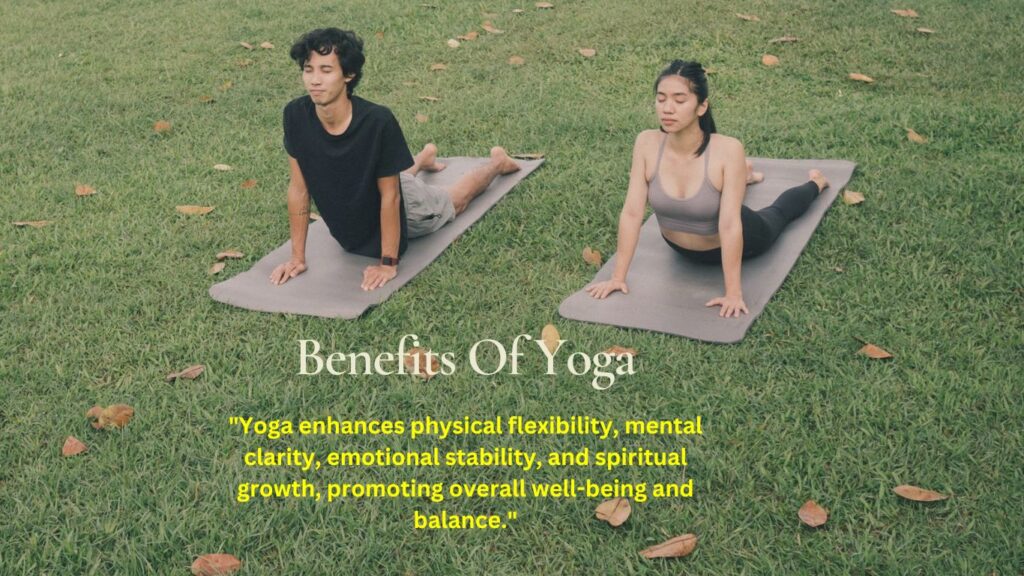Yoga is an ancient practice that integrates the mind, body, and spirit, offering numerous benefits such as increased flexibility, strength, relaxation, and mental clarity. For beginners, starting a yoga practice might seem daunting, but with the right guidance, you can begin your journey with confidence. This article will introduce you to essential yoga poses designed for beginners. These poses will help you build a strong foundation, enhance your physical and mental well-being, and pave the way for a deeper yoga practice.
Download Yoga Poses
1. Mountain Pose (Tadasana)
Mountain Pose is a fundamental standing posture that forms the foundation for many other poses in yoga. It helps improve posture, balance, and focus.
- How to Perform:
- Stand with your feet together or hip-width apart.
- Distribute your weight evenly across both feet.
- Engage your thighs and lift your kneecaps without locking your knees.
- Lengthen your spine, lift your chest, and relax your shoulders.
- Keep your arms by your sides with palms facing forward.
- Focus on your breath and stay in the pose for 30 seconds to 1 minute.
2. Downward-Facing Dog (Adho Mukha Svanasana)
Downward-Facing Dog is a popular pose that stretches the entire body, especially the hamstrings, calves, and shoulders. It also helps calm the mind and relieve stress.
- How to Perform:
- Start on your hands and knees, with your wrists aligned under your shoulders and your knees under your hips.
- Spread your fingers wide and press firmly into the ground.
- Tuck your toes and lift your hips towards the ceiling, forming an inverted “V” shape.
- Keep your knees slightly bent if needed, and work towards straightening your legs.
- Press your heels toward the ground and lengthen your spine.
- Hold the pose for 5-10 breaths.
3. Warrior I (Virabhadrasana I)
Warrior I is a powerful standing pose that strengthens the legs, opens the hips, and improves focus and concentration.
- How to Perform:
- Begin in Mountain Pose.
- Step your right foot back about 3-4 feet, turning your right foot out at a 45-degree angle.
- Bend your left knee, aligning it over your left ankle.
- Raise your arms overhead, with palms facing each other or touching.
- Square your hips towards the front and lengthen your spine.
- Hold the pose for 5-10 breaths, then switch sides.
4. Warrior II (Virabhadrasana II)
Warrior II is another powerful standing pose that builds strength in the legs, stretches the hips, and improves stamina.
- How to Perform:
- From Mountain Pose, step your right foot back about 4-5 feet.
- Turn your right foot out at a 90-degree angle and your left foot slightly inwards.
- Bend your left knee, keeping it aligned over your left ankle.
- Extend your arms parallel to the ground, with palms facing down.
- Gaze over your left hand and keep your torso upright.
- Hold the pose for 5-10 breaths, then switch sides.
5. Tree Pose (Vrikshasana)
Tree Pose is a balancing pose that strengthens the legs, improves focus, and promotes a sense of grounding.
- How to Perform:
- Start in Mountain Pose.
- Shift your weight onto your right foot and lift your left foot off the ground.
- Place the sole of your left foot on your right inner thigh, calf, or ankle (avoid the knee).
- Bring your hands together in front of your chest in a prayer position.
- Focus your gaze on a fixed point in front of you.
- Hold the pose for 5-10 breaths, then switch sides.
6. Child’s Pose (Balasana)
Child’s Pose is a restorative pose that gently stretches the back, hips, and thighs while calming the mind and relieving stress.
- How to Perform:
- Start on your hands and knees, with your big toes touching and knees spread wide.
- Sit back on your heels and extend your arms forward, bringing your forehead to the ground.
- Allow your chest to rest between your thighs.
- Breathe deeply and relax in the pose for 1-2 minutes.
7. Cat-Cow Pose (Marjaryasana-Bitilasana)
Cat-Cow Pose is a gentle flow that warms up the spine, increases flexibility, and promotes a mindful connection between movement and breath.
- How to Perform:
- Begin on your hands and knees, with your wrists aligned under your shoulders and your knees under your hips.
- Inhale as you arch your back, lifting your head and tailbone towards the ceiling (Cow Pose).
- Exhale as you round your spine, tucking your chin towards your chest and tailbone under (Cat Pose).
- Continue flowing between Cat and Cow with your breath for 5-10 rounds.
8. Cobra Pose (Bhujangasana)
Cobra Pose is a gentle backbend that strengthens the spine, opens the chest, and improves flexibility in the upper body.
- How to Perform:
- Lie face down on the mat with your legs extended and the tops of your feet pressing into the ground.
- Place your hands under your shoulders, elbows close to your body.
- Inhale as you press into your hands and lift your chest off the ground, keeping your elbows slightly bent.
- Keep your shoulders relaxed and your gaze forward or slightly upward.
- Hold the pose for 5-10 breaths, then lower back down.
9. Seated Forward Bend (Paschimottanasana)
Seated Forward Bend is a calming pose that stretches the entire back of the body, including the hamstrings, spine, and shoulders.
- How to Perform:
- Sit on the mat with your legs extended straight in front of you.
- Flex your feet and sit up tall, lengthening your spine.
- Inhale as you reach your arms overhead, then exhale as you fold forward from the hips.
- Reach for your feet, ankles, or shins, depending on your flexibility.
- Keep your spine long and avoid rounding your back.
- Hold the pose for 5-10 breaths, allowing your body to relax with each exhale.
10. Bridge Pose (Setu Bandhasana)
Bridge Pose is a backbend that strengthens the glutes, hamstrings, and lower back while opening the chest and stretching the neck.
- How to Perform:
- Lie on your back with your knees bent and feet hip-width apart, close to your buttocks.
- Press your arms and feet into the ground as you lift your hips towards the ceiling.
- Interlace your fingers under your back and press your arms into the ground for support.
- Keep your thighs parallel and avoid flaring your knees out.
- Hold the pose for 5-10 breaths, then slowly lower your hips back down.
11. Corpse Pose (Savasana)
Corpse Pose is a final relaxation pose that allows the body and mind to fully relax and integrate the benefits of your yoga practice.
- How to Perform:
- Lie flat on your back with your legs extended and arms resting by your sides, palms facing up.
- Close your eyes and take slow, deep breaths.
- Allow your entire body to relax, releasing any tension.
- Stay in the pose for 5-10 minutes, focusing on your breath and allowing your mind to be still.
Conclusion
Yoga is a journey that begins with a single step, and these beginner-friendly poses are the perfect starting point. By practicing these poses regularly, you can build strength, flexibility, and balance while cultivating a deeper connection between your body and mind. As you progress in your practice, you’ll find that yoga offers not only physical benefits but also a sense of inner peace and well-being. Remember to approach your practice with patience, mindfulness, and an open heart, and enjoy the transformative experience that yoga can offer.


